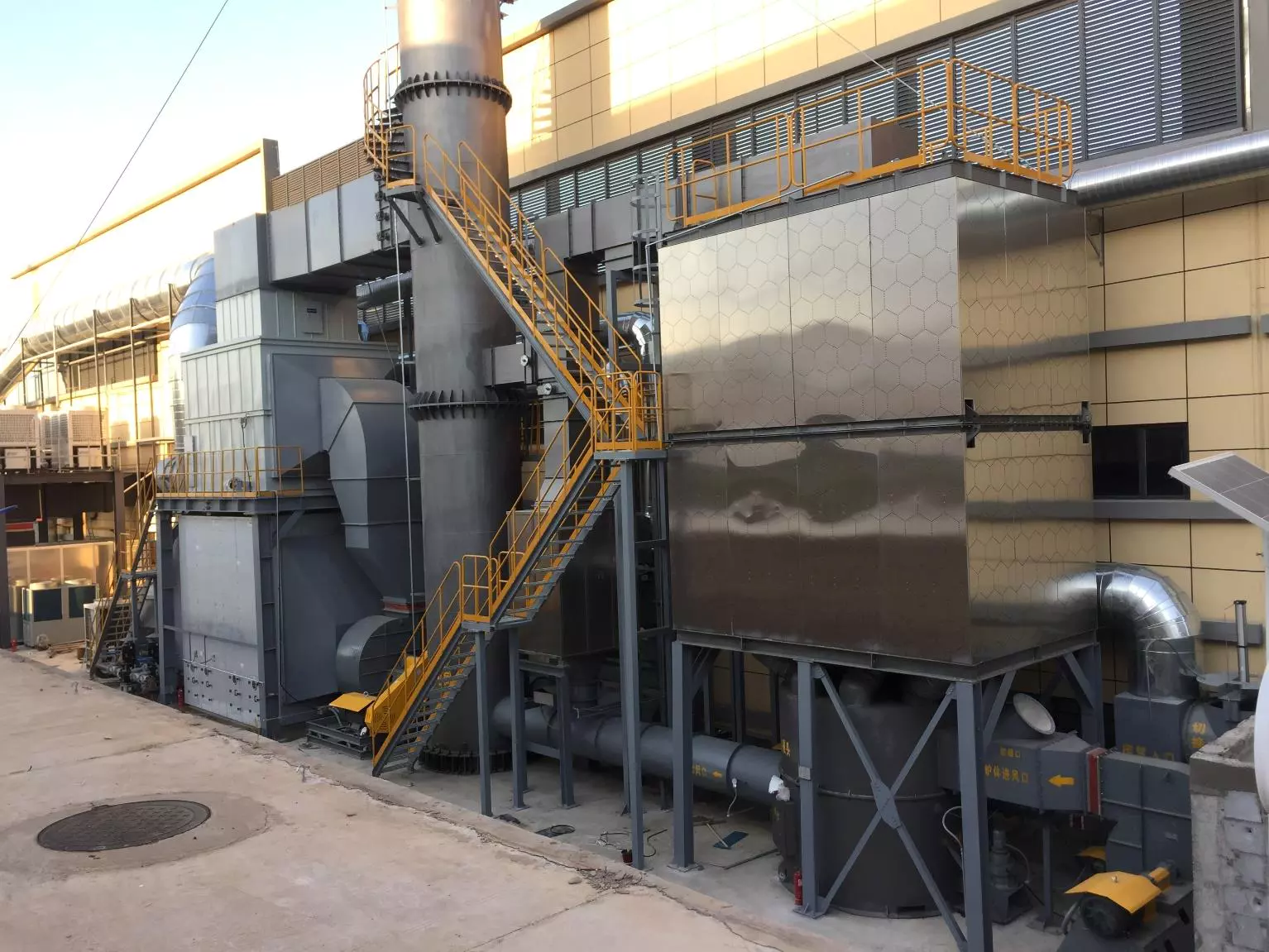Recuperative Thermal Oxidizer vs Regenerative
Introduction
Recuperative thermal oxidizers and regenerative thermal oxidizers are both used to treat volatile organic compounds (VOCs) and other emissions. While both types of oxidizers are designed to destroy pollutants through high-temperature combustion, there are significant differences between the two. In this article, we will explore the differences between recuperative thermal oxidizers and regenerative thermal oxidizers, including their designs, operating principles, advantages, and disadvantages.
Rekuperační tepelný oxidátors
Recuperative thermal oxidizers are designed to recover heat from the combustion process to preheat the incoming process gas stream. This preheating reduces the amount of fuel that is needed to maintain the required operating temperature and reduces operating costs. Recuperative thermal oxidizers are typically used for low-to-medium VOC concentrations and flow rates.
Design
Recuperative thermal oxidizers consist of a combustion chamber, heat exchanger, and a control system. The incoming process gas stream is heated in the heat exchanger by the hot exhaust gases from the combustion chamber. The preheated process gas stream then enters the combustion chamber, where it is heated to the required temperature for complete combustion. The hot exhaust gases are then passed through the heat exchanger to preheat the incoming process gas stream and recover heat.
Advantages and Disadvantages
The advantages of recuperative thermal oxidizers include low operating costs, high thermal efficiency, and the ability to handle low-to-medium VOC concentrations and flow rates. However, they are less effective at removing particulate matter and have lower destruction efficiency for high concentrations of VOCs.
Regenerative Thermal Oxidizers
Regenerative thermal oxidizers are designed to recover heat from the exhaust gases to preheat the incoming process gas stream. This preheating reduces the amount of fuel required to maintain the required operating temperature and reduces operating costs. Regenerative thermal oxidizers are typically used for high VOC concentrations and flow rates.
Design
Regenerative thermal oxidizers consist of a combustion chamber, ceramic heat recovery beds, and a control system. The incoming process gas stream is heated in the ceramic heat recovery bed by the hot exhaust gases from the combustion chamber. The preheated process gas stream then enters the combustion chamber, where it is heated to the required temperature for complete combustion. The hot exhaust gases are then passed through the other ceramic heat recovery bed to recover heat and preheat the incoming process gas stream.
Advantages and Disadvantages
The advantages of regenerative thermal oxidizers include high destruction efficiency for VOCs, the ability to handle high VOC concentrations and flow rates, and the ability to remove particulate matter. However, they have higher operating costs due to the complexity of their design, lower thermal efficiency, and the potential for ceramic bed breakage.
Conclusion
Recuperative thermal oxidizers and regenerative thermal oxidizers are both effective solutions for treating VOCs and other emissions. The choice of which system to use depends on the specific needs of the application. Recuperative thermal oxidizers are ideal for low-to-medium VOC concentrations and flow rates, while regenerative thermal oxidizers are ideal for high VOC concentrations and flow rates. Regardless of which system is used, it is important to ensure that it is designed and operated properly to ensure effective emissions control.

Recuperative Thermal Oxidizer vs Regenerative
Our company is a high-tech enterprise specializing in the comprehensive treatment of volatile organic compounds (VOCs) waste gas and carbon reduction and energy-saving technologies. We have four core technologies: thermal energy, combustion, sealing, and automatic control. We also have the ability to simulate temperature fields and airflow fields, as well as to test the properties of ceramic heat storage materials, molecular sieve adsorption materials, and high-temperature incineration and oxidation of VOCs organic compounds.
Our RTO technology research and development center and waste gas carbon reduction engineering technology center are located in Xi’an, and we have a 30,000 square meter production base in Yangling. We are a leading manufacturer of RTO equipment and molecular sieve rotary equipment in the world. Our core technology team is from the Sixth Academy of Aerospace Liquid Rocket Engine Research Institute (Aerospace Six Academy), and we currently have more than 360 employees, including more than 60 research and development technology backbone personnel, three research professor-level senior engineers, six senior engineers, and 27 thermodynamics Ph.Ds.
Our core products are the rotary valve heat storage oxidation furnace (RTO) and molecular sieve adsorption and concentration rotary equipment. With our own environmental protection and thermal energy system engineering expertise, we can provide customers with integrated solutions for comprehensive treatment of industrial waste gas and carbon reduction and utilization of thermal energy in various working conditions.

Our company has obtained various certifications, qualifications, patents, and honors, including but not limited to the management system certification of intellectual property rights, quality management system certification, environmental management system certification, construction industry enterprise qualification, high-tech enterprise, rotary valve heat storage oxidation furnace rotary valve patent, rotary blade heat storage incineration equipment patent, disc-shaped molecular sieve rotary patent, etc.
How to Choose the Right RTO Equipment
Choosing the right RTO equipment involves several key considerations:
- Určete vlastnosti odpadního plynu
- Understand the local regulations and emission standards
- Vyhodnoťte energetickou účinnost
- Zvažte provoz a údržbu
- Analyze budget and cost
- Vyberte vhodný typ RTO
- Zvažte environmentální a bezpečnostní faktory
- Perform performance testing and validation

Our Service Process
We provide a comprehensive service process, including:
- Consultation and evaluation: preliminary consultation, on-site inspection, and demand analysis
- Design and solution development: solution design, simulation and modeling, and solution review
- Production and manufacturing: customized production, quality control, and factory testing
- Installation and commissioning: on-site installation, commissioning, and training services
- After-sales support: regular maintenance, technical support, and spare parts supply
Our professional team can tailor RTO solutions for customers, providing one-stop services to meet their specific needs.
Autor: Miya
